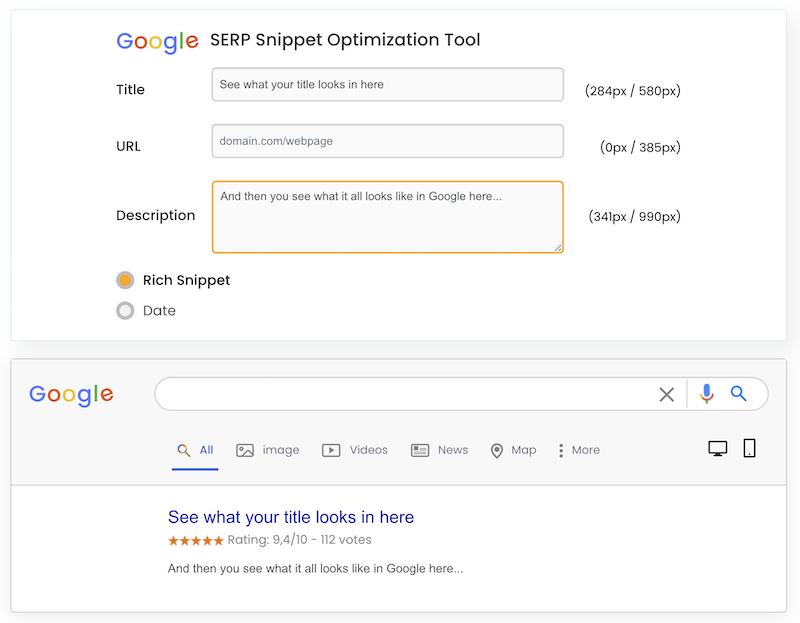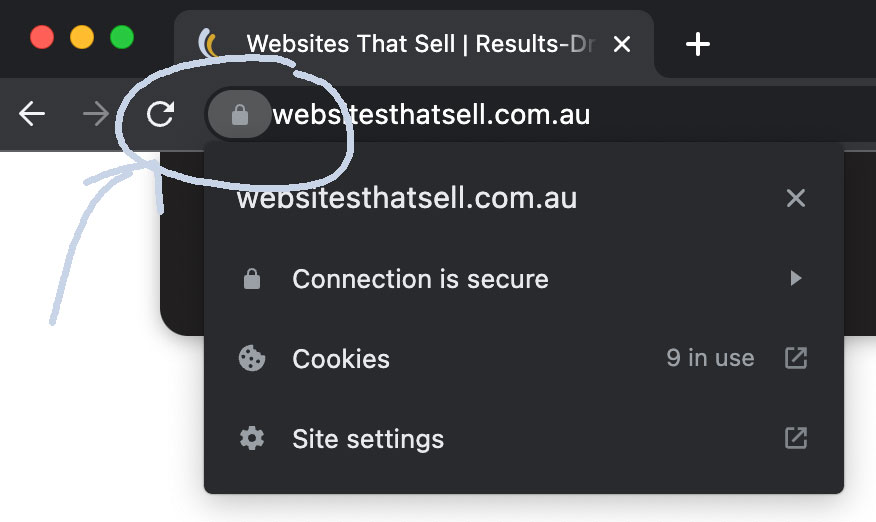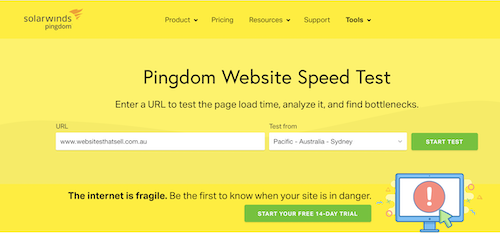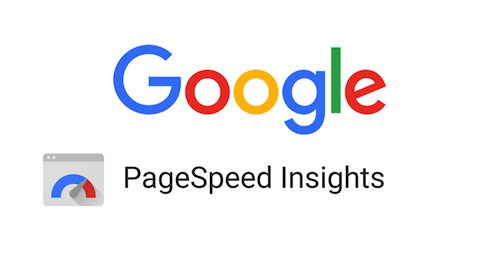You launch a website. You want Google to notice it. You’ve heard SEO is a thing, so you do a quick Google search.
Suddenly, you're drowning in jargon and contradictory advice.
If you're confused about on-page versus off-page SEO, join the club. Most business owners ask me: "Should I fix my website first or get other sites to link to me?", or they place way too much importance on backlinks while their website content is stuck in 2018.
Both matter. That answer doesn't help much, but bear with me.
On-page SEO is making your website good. Off-page SEO is getting other people to say your website is good. You need both.
Here's what each one actually means and what you should do about it.
What is On-Page SEO?
On-page SEO is everything you control on your own website. Your content, your page speed, your title tags. All the stuff that happens on pages you own.
The good news? You can change these things whenever you want. No begging other websites for favours.
Key Parts of On-Page SEO
Title Tags and Meta Descriptions
Your title tag is what shows up as the blue link in Google results. Keep it under 60 characters. Put your main keyword in there - this can literally be the name of your blog & your business name if you have room.
Meta descriptions are the gray text under your title. They don't necessarily help you rank (the jury is out), but we know they get people to click. Write them like you're trying to get someone's attention in a crowded room.

Content
Write helpful stuff that your target audience actually wants to know and that aligns with their journey through your sales funnel. Use your keywords naturally. Don't stuff them in every sentence like you're trying to hit a quota.
Google wants content that answers questions. Not content that repeats the same phrase 47 times.
Headings
Use H1 for your main title. H2 for major sections. H3 for subsections. This one will take you back to Mr Smith's 5th Grade English class. Simple.
Internal Links
Link to other pages on your site when it makes sense. Don't force it or overlink. When in doubt - link up and down to the direct service page or content silo your blog is supporting - and leave it there. Links going all over the place is a big issue for modern day Google algorithms.
Images
Give your images descriptive names. Not "IMG_2847.jpg" but "seo checklist example". Add alt text that describes what's in the image as if you’re writing for someone who can’t see the image at all.
And compress your images. Nobody wants to wait 10 seconds for your giant photo to load.
SSL/HTTPS
It looks like another confusing acronym but don't fear; they simply refer to the security of your page.
SSL stands for Secure Sockets Layer and enabling it will provide a layer of protection between your web server and your visitor's web server, keeping all your information safe and secure.
Here's what it should look like in your browser toolbar:

That little lock symbol and assurance that the site is 'secure' will make the Google search engine drive more traffic to your site and go a long way in improving your site's authority.
URL Structure
A well-organised URL structure will allow search engines to navigate your website easily and make it more user-friendly overall.
Keep your URLs clean and simple. Include your main keyword when it makes sense, and keep them unique from the other pages of your site.
Good: yoursite.com/seo-tips
Bad: yoursite.com/page?id=12345&category=blog
Here's a super simple illustration of what this looks like:

Well optimised URLs contain keywords relating to the content while being short and sweet.
Speed and Mobile
Your site needs to load fast on phones. Most people browse on mobile now. If your site is slow or looks broken on a phone, you're losing visitors.
There's 2 tools we recommend.
Pingdom - because you can select to test from Australian servers.

Google Page Speed Insights - the tools gives some additional insights.

Simple On-Page Checklist
✅ Write good title tags (under 60 characters)
✅ Create useful meta descriptions
✅ Use headings properly (H1, H2, H3)
✅ Include keywords naturally
✅ Link to relevant pages on your site
✅ Optimise images with good filenames and alt text
✅ Make your site load fast
✅ Make sure it works on phones
✅ Get an SSL certificate (the little lock icon)
✅ Use clean, readable URLs with keywords
What is Off-Page SEO?
Off-page SEO is what happens away from your website. Other sites linking to you (which act like votes for your site). People mentioning your brand. Your reputation online.
You can't control this directly. But you can influence it.
Main Off-Page Strategies
Getting Backlinks
When another website links to yours, that's a backlink. Google sees this as a vote of confidence.
But not all links are equal. One link from a respected industry site beats 100 links from spam blogs.
How do you get good links? Create content worth linking to. Build relationships. Be helpful in your industry.
Social Media
Social shares don't directly boost rankings. But they can lead to more visibility, which can lead to more links.
Plus, social media is where people discover content now. If you’re not active or you’re active but missing the mark with branding - your SEO will suffer.
Brand Mentions
Sometimes people mention your brand without linking. These still help establish your authority.
Set up Google Alerts for your brand name. When someone mentions you, reach out and ask if they'd mind adding a link.
Guest Posts
Write articles for other websites in your industry. Include a link back to your site.
But don't write garbage just to get a link. Provide real value, or editors will ignore your pitches.
Reviews
For local businesses, online reviews matter. Google My Business, Yelp, industry directories.
Good reviews help you rank better in local searches.
Domain Authority
Think of domain authority as your website's reputation score. Sites with higher authority tend to rank better.
You build authority slowly through good content and quality backlinks. There's no shortcut.
Why There's No Off-Page SEO Checklist
I know, I love a checklist too. But there's a reason we can't provide one for off-page stuff.
Off-page SEO doesn't work like a checklist. On-page tasks are clear: either you have alt text on your images or you don't. Either your page loads fast or it doesn't.
Off-page SEO is different. You can't just "get 10 backlinks" and check it off a list. Quality matters more than quantity.
Instead of following a checklist, focus on:
- Creating content worth linking to
- Building real relationships in your industry
- Providing value before asking for anything
- Engaging authentically on social media
Off-page SEO is about earning trust over time. That can't be reduced to simple tasks.
The closest thing to an off-page checklist is monitoring what's already happening:
- Check your backlinks monthly
- Monitor brand mentions
- Track your domain authority
- Keep your Google My Business listing updated
But these are measurements, not action items. Off-page SEO success comes from consistent relationship building, not checking boxes.
Key Differences

How They Work Together
Great on-page SEO with no backlinks = a beautiful store in the middle of nowhere.
Lots of backlinks with bad on-page SEO = a popular restaurant with terrible food.
Good on-page work makes content worth linking to. Quality backlinks give your optimised pages the authority to rank higher.
They feed each other. Better content attracts more links. More links help your content rank better.
Building a Balanced Strategy
Start with an audit
Before you do anything, figure out where you stand. Use Google Search Console and Page Speed Insights to see your current rankings and find technical problems.
Don't skip this step. You might be worried about backlinks when your real problem is a site that takes 20 seconds to load.
Fix the foundation first
New websites should focus on on-page basics first. Get your content right. Fix technical issues. Make sure everything works.
Then worry about getting other sites to link to you.
Track what matters
Watch your rankings in Google Search Console. Monitor your backlinks with tools like Ahrefs. Check your site speed regularly.
But don't obsess over daily changes. SEO moves slowly.
Quality over quantity
One well-researched article beats ten thin ones. One link from an industry leader beats 50 from directories nobody visits.
This takes longer but works better.
Be patient
On-page fixes might help within weeks. Off-page work takes months to show results.
SEO isn't a sprint. Stick with it.
Common Mistakes to Avoid
Ignoring one or the other
Some people obsess over technical SEO but never try to get backlinks. Others chase links while their site loads like molasses.
Balance both.
Buying cheap links
Don't buy links from "SEO services" that promise 1000 backlinks for $50. Liam Neeson Google will find out and it will kill you(r rankings).
Keyword stuffing
Writing "best pizza restaurant" 20 times in a 500-word article doesn't help. It hurts. We can all see what you’re trying to do.
Focusing only on Google
SEO helps you get found. But if your content is boring or your site is hard to use, visitors will leave immediately.
Optimise for humans first - Google takes its cue from the user experience and interactions on your site.
Got it? Now What?
Now that the on and off-page SEO factors are hopefully a little bit clearer than mud, you can take some actions right away to kick things off:
- Run an SEO audit using Google Search Console
- Fix any major technical problems
- Improve your most important pages (title tags, content, speed)
- Start creating content worth linking to
- Begin outreach for backlinks
Don't try to do everything at once. Pick one area and get good at it before moving on.
And remember: SEO isn't about tricking Google. It's about making your website genuinely useful and helping people find it. Google will reward you for it.
The sites that rank best do both on-page and off-page SEO well. But they do it by focusing on their users first, not on gaming the system.
KICK START YOUR ON-PAGE & OFF-PAGE SEO
Imagine searching for a needle in a haystack and then having someone with a metal detector come alongside to help you. Suddenly a long, painful task becomes quicker and easier, and you know you're going to find what you're looking for at the end of the day.
That's what we do for our SEO clients.
There may not be an exact formula for SEO success, but we know SEO so well that it is usually pretty obvious to us which on-page and off-page factors to focus on to get results fast.
Contact us today or call our office on 1300 974 367 if you're ready to get the experts involved to take over your on-page and off-page SEO.
We specialise in SEO that doesn't just get rankings - it gets results, and in creating content that pleases both your target audience and the Google algorithmic overlords.

